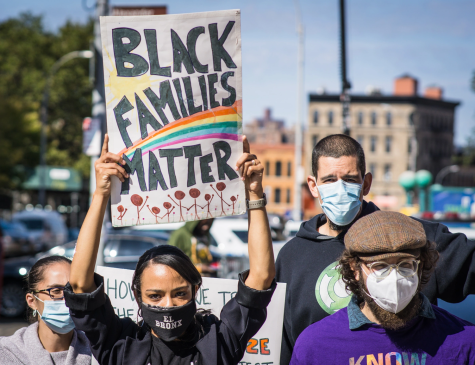Higher education needs full funding
May 7, 2015
Three years ago, Gov. Brown launched a four-year program of gradually increased budgets for the University of California and the California State University systems, contingent on keeping student fees flat.
Sounds pretty good, right?
The problem is, such small increases in the state’s share of funding, combined with tuition freezes, means funding for higher education is actually lower than the rate of inflation. Rather than a guaranteed slow rate of funding growth, this is instead a guaranteed slow bleeding to death of California’s public higher education systems. Plus, starting the Multi-Year Stable Funding Plan at the depths of the Great Recession meant starting when the schools were already terribly wounded.
In other words, even with these increased budgets, none of the state’s three public higher education systems—UC, CSU, and the community colleges—is receiving enough funds to maintain their enrollment levels or to fix their decaying campus infrastructures.
In fact, none of the systems is receiving the full funding that they need just to maintain the status quo.
But that can be fixed, and it can be fixed now.
This spring, the legislature is finalizing the 2015-16 state budget. Legislators need only look at the budget requests that each system has made to see that there’s an urgent need to increase the governor’s proposed higher education budget—just to keep our campus doors open and our higher education systems running.
By July 1, when the budget is set to be finalized, we could have a fix in hand, if only legislators and the governor will use some common sense and allocate full funding to all three systems.
Let’s look at the CSU system for an example. As part of his four-year funding plan, the governor has proposed $119.5 in additional funding, which looks good on paper but in fact is $97.5 million less than the CSU Board of Trustees requested late last fall.
That’s $97.5 million for student success and completion initiatives, as well as critical technology and infrastructure needs.
The full $217 million in additional funding would allow the CSU to enroll up to 12,000 additional students, hire more faculty and staff, and invest in new educational approaches and proven technologies to increase graduation rates.
And, even then, it would only leave the CSU with the level of state support it had in 2007-08, without even taking inflation and student growth into account.
California will need at least one million more graduates by 2025 to remain economically competitive, according to the Public Policy Institute of California. How can we possibly meet this need if the state short-changes public higher education year after year?
A coalition of stakeholder organizations representing students and employees across all three systems has come together to press not only for full funding but also for a re-commitment to the California Master Plan for Higher Education. Reclaim California Higher Education (www.reclaimcahighered.org/) advocates for a return to the vision of higher education affordability, accessibility, and quality for all Californians.
This spring, its members are talking to legislators across the state, urging them to restore adequate state funding to higher education, starting with the pending 2015-16 state budget.
Now is the time to implement both increased state investment and institutional reforms. As the group stated in a letter to Gov. Brown in early March, “Tuition and administrative costs are skyrocketing, while enrollment of in-state students is not keeping pace with the needs of our economy. Our institutions of higher learning should, once again, be engines of economic growth and good jobs in our communities.”
With the 2015-16 budget, it’s time to again prioritize higher education within the State of California!















